Mikhail Baklanov, Karen Maex, Martin Green9780470013601, 0470013605
This book presents an in-depth overview of the novel developments made by the scientific leaders in the area of modern dielectric films for advanced microelectronic applications. It contains clear, concise explanations of material science of dielectric films and their problem for device operation, including high-k, low-k, medium-k dielectric films and also specific features and requirements for dielectric films used in the packaging technology. A broad range of related topics are covered, from physical principles to design, fabrication, characterization, and applications of novel dielectric films.
Table of contents :
Dielectric Films for Advanced Microelectronics……Page 1
Contents……Page 7
Series Preface……Page 13
Preface……Page 15
1.1 Introduction……Page 25
1.2 Property Requirements for Integration……Page 27
1.3 Characterization……Page 28
1.4.1 Preparation……Page 30
1.4.2 Properties of DLC-type low-k dielectrics……Page 31
1.4.3 Processing of DLC-type low-k dielectrics……Page 36
1.4.4 Integration of DLC-type low-k dielectrics……Page 38
1.5 SiCOH Films as Low-k and Ultralow-k Dielectrics……Page 39
1.5.1 Preparation……Page 40
1.5.2 Properties of SiCOH and pSiCOH dielectrics……Page 42
1.5.3 Integration of SiCOH as the interconnect dielectric……Page 53
References……Page 54
2.1 Introduction……Page 57
2.2.1 Organic polymers……Page 61
2.2.2 Inorganic polymers……Page 62
2.3 Spin-on Porous Materials……Page 71
2.3.1 Porogen free systems……Page 72
2.3.2 Porogen-containing systems……Page 75
2.4 New Processing Strategy to Integration Issues……Page 94
2.5 Summary……Page 95
Acknowledgments……Page 96
References……Page 97
3: Porosity of Low Dielectric Constant Materials……Page 109
3.2.1 Introduction……Page 110
3.2.2 Overview of the PALS experimental technique……Page 111
3.2.3 Ps in porous films……Page 113
3.2.4 Pore characterization with PALS……Page 115
3.2.5 Future improvements in PAS capabilities……Page 122
3.2.6 Conclusion……Page 123
3.3.1 Introduction……Page 124
3.3.2 Thin film density by X-ray reflectivity (XR)……Page 125
3.3.4 Pore wall density and pore structure……Page 127
3.3.5 X-ray porosimetry……Page 130
3.3.6 Comparison of small-angle scattering and X-ray porosimetry……Page 138
3.3.7 Conclusions……Page 140
3.4.2 Fundamentals of ellipsometric porosimetry……Page 141
3.4.3 Porosity characterization by EP……Page 144
3.4.4 Conclusions……Page 154
References……Page 155
4.1.1 Classification of Low-k Dielectrics……Page 161
4.2.1 Introduction……Page 169
4.2.2 Modulus……Page 170
4.2.3 Interfacial properties……Page 174
4.3.1 Thermal stability……Page 195
4.3.2 Thermal conductivity of low-k dielectric films……Page 197
4.4.1 The effect of the chemistry of the dielectric……Page 203
4.4.2 The effect of dielectric morphology……Page 211
4.5 Conclusions……Page 212
References……Page 214
5.1 Introduction……Page 223
5.2.1 From aluminum to copper in integrated circuits……Page 225
5.2.2 Dual damascene architectures……Page 228
5.3.1 Resist poisoning……Page 236
5.3.2 Compatibility of low-k materials with wet cleaning……Page 238
5.3.3 Compatibility of metallic diffusion barriers with low-k materials……Page 239
5.3.4 Pore sealing……Page 247
5.3.5 Processing damage to low-k films……Page 251
5.3.6 CMP compatibility……Page 259
5.4 Reliability Challenges……Page 262
Acknowledgments……Page 263
References……Page 264
6: ONO Structures and Oxynitrides in Modern Microelectronics: Material Science, Characterization and Application……Page 275
6.1 Introduction……Page 276
6.2 Technology and Basic Properties of Silicon Nitride/Oxynitride Films and ONO Stacks……Page 277
6.2.1 Traditional deposition techniques……Page 278
6.2.2 Silicon nitrides and oxynitrides as gate dielectrics……Page 279
6.2.3 ONO stacks for advanced memories……Page 283
6.2.4 Compositional analyses of device-quality ONO stack……Page 287
6.3 Atomic Structure of Silicon Oxynitride……Page 293
6.4 Traps in the Nitride Layer of ONO……Page 296
6.5 Charge Transport in Silicon Nitride……Page 298
6.6.1 Traditional SONOS……Page 304
6.6.2 NROM memories……Page 307
6.6.3 High-k dielectrics in SONOS memories……Page 310
References……Page 314
7.1 Introduction……Page 321
7.2.1 General……Page 323
7.2.2 Microscopic polarization……Page 324
7.3 Lattice Vibration……Page 326
7.4 Electronic Structure……Page 329
7.5 High-k Film Growth……Page 332
7.6 Interface Layer……Page 334
7.6.1 Interface layer properties……Page 335
7.6.2 Interface layer formation process……Page 336
7.7.1 HfSiOx and HfAlOx……Page 341
7.7.2 New candidates for amorphous High-k dielectric films……Page 345
7.7.3 Dielectric permittivity engineering……Page 348
7.8.1 Inversion layer mobility……Page 354
7.9 Summary……Page 356
References……Page 357
8.1 Introduction……Page 361
8.2.1 HfO2 on Si by ALCVD……Page 364
8.2.3 HfO2 on Ge by MOCVD……Page 366
8.3 Growth Mode……Page 367
8.4 Film Thickness……Page 370
8.5 Density……Page 373
8.6.1 Bulk composition……Page 374
8.6.2 Contamination……Page 377
8.6.3 Interfacial layer characterization……Page 378
8.7 Bandgap and band-offset……Page 383
8.8 Crystallography……Page 386
8.9 Defects……Page 387
References……Page 390
9.1 Introduction……Page 395
9.2.1 Gate leakage current……Page 398
9.2.2 C-V measurements and interpretation……Page 401
9.2.3 Charge pumping……Page 405
9.2.4 Noise characterization and modeling……Page 410
9.2.5 Time-dependent dielectric breakdown……Page 416
9.2.6 Negative-bias temperature instability……Page 424
9.3.1 Effective oxide thickness: EOT vs CET……Page 428
9.3.2 Gate workfunction……Page 429
9.3.3 Interface and bulk defect characterization……Page 433
9.3.4 Noise characterization and modeling……Page 438
9.3.5 Time-dependent dielectric breakdown……Page 440
9.3.6 Negative-bias temperature instability……Page 444
9.4 Conclusions……Page 446
References……Page 447
10.1 Introduction……Page 461
10.2 Thermal Stability Improvement by Nitrogen Incorporation……Page 463
10.3 Interfacial Characteristics Between High-k and Silicon Substrate……Page 464
10.4 Gate Material Selection: Poly-Si Gate vs Metal Gate……Page 467
10.5 Integration of 65 nm Node HfSiON Transistor with SRAM……Page 471
Acknowledgments……Page 473
References……Page 474
11: Anisotropic Conductive Film (ACF) for Advanced Microelectronic Interconnects……Page 477
11.1 Introduction……Page 478
11.2 Materials……Page 480
11.2.1 Adhesive matrix……Page 481
11.3.1 Self-assembled monolayer (SAM)……Page 482
11.3.2 Thermal behavior of monolayer coating……Page 485
11.3.4 Thermal conductivity of ACA……Page 486
11.4 Assembly……Page 488
11.5.1 Application of ACA/ACF in flip-chip……Page 491
11.5.3 ACF for liquid crystal display (LCD) applications……Page 492
11.6 Reliability……Page 494
11.7.2 High-frequency compatibility……Page 495
11.8 Conclusion……Page 496
References……Page 497
Index……Page 501
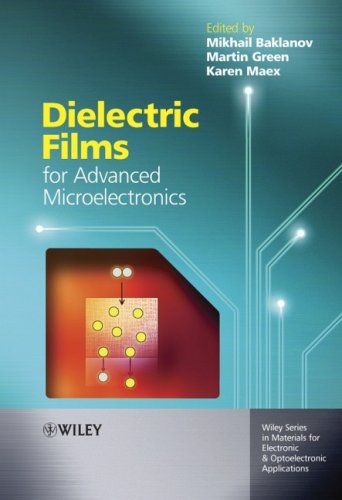

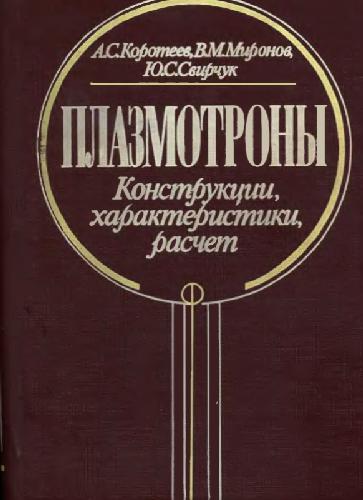

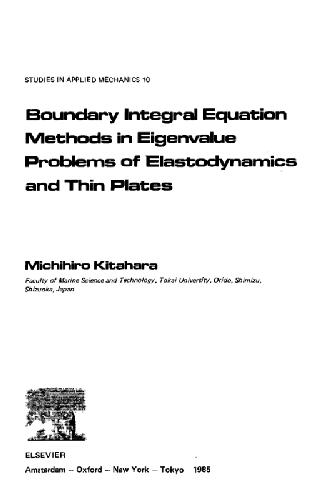
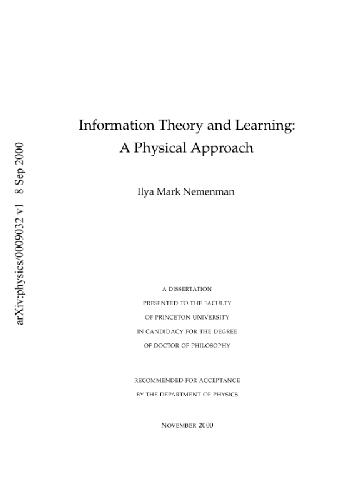
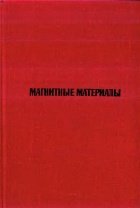
Reviews
There are no reviews yet.